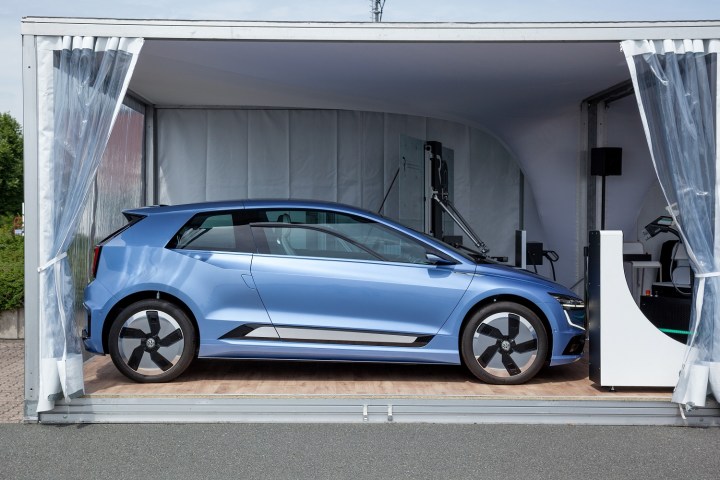
The Gen.E was designed with electrification in mind from the get-go. Unfortunately, Volkswagen isn’t ready to give us the low-down on its newest prototype. They’re showing the car to the public only so that “engineers and scientists in Wolfsburg give a small snapshot of otherwise strictly confidential topics,” according to a statement released online. However, the few morsels of information released by the brand are promising.
An electric drivetrain gives the hatchback a range of over 250 miles, which allows it to keep up with cars like the Chevrolet Bolt and the Tesla Model 3. The battery that provides electricity is integrated into the platform so that it won’t get damaged in the event of an accident, while the electric motor has been optimized to provide a blend of efficiency and performance. Whether the platform is in any way related to the modular MEB architecture that Volkswagen is currently developing for production models is up in the air at this point.

Interestingly, one of the secret projects engineers are working on is an autonomous robot that can charge an electric car. Details are again fantastically vague, but the company says it envisions a future where mobile, four-wheeled robots meander through multi-story parking garages to charge electric cars.
There’s something to be said about the Gen.E’s design, too. Visually, it takes styling cues from the ultra-efficient XL1 built in limited numbers and sold for a supercar-like price a couple of years ago, and pastes those cues on an attractive hatchback body that’s vaguely reminiscent of a Golf or a Polo. The seventh generation of the Golf has been in production since 2012, and we know it’s getting a replacement before the turn of the decade. Naturally, we’re tempted to say the Gen.E might shed a little bit of insight into what the eighth-gen model will look like, but Volkswagen assures us that’s not the case.
“The vehicle itself is actually of secondary relevance, just carrying some technical features related to fast charging. To be clear: any speculation regarding any brand-related production vehicle or intentions of this kind are absolutely without substance,” a company spokesperson told Digital Trends.
Editors' Recommendations
- Volkswagen ID. Buzz prototype first drive: Here comes your van
- Realme’s new ultra-premium flagship will come with 125W fast charging in 2022
- 2021 Volkswagen ID.4 electric car prototype drive: A crowd-pleaser
- Volkswagen’s celebrated Golf GTI returns with more power and new tech
- Volkswagen’s friendly looking robot would autonomously charge electric cars



